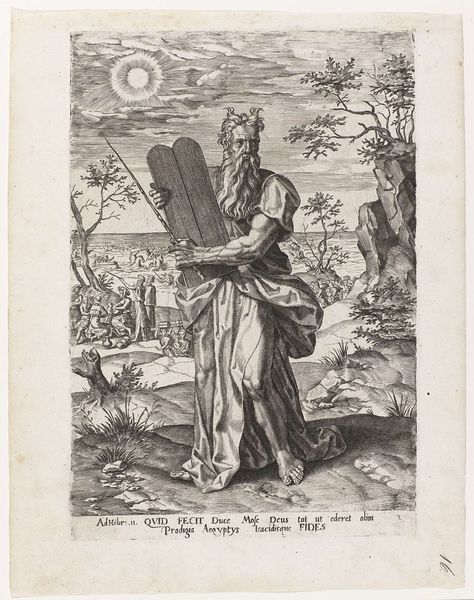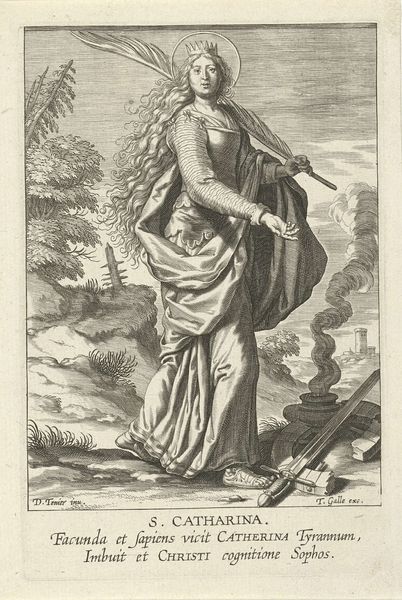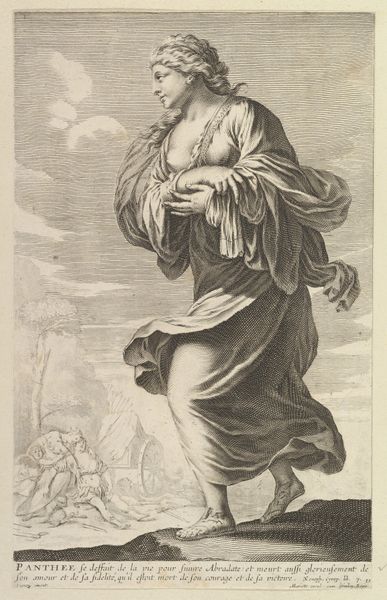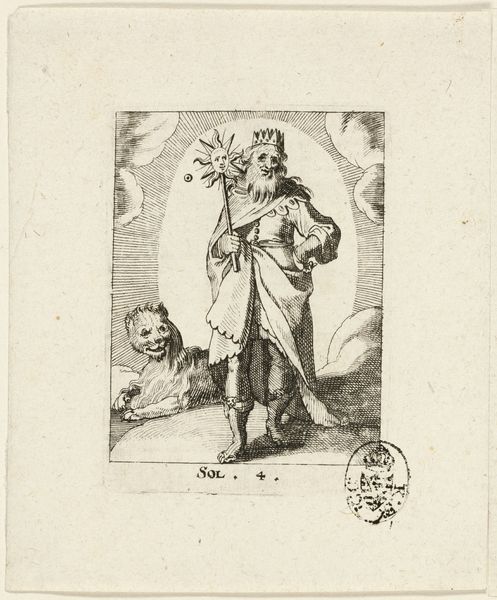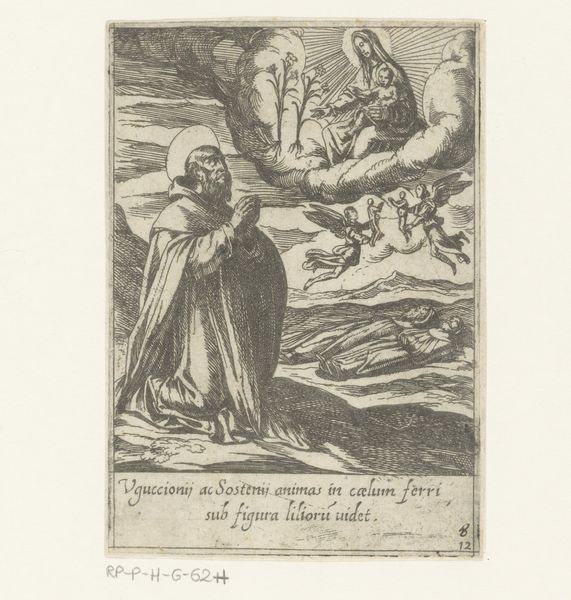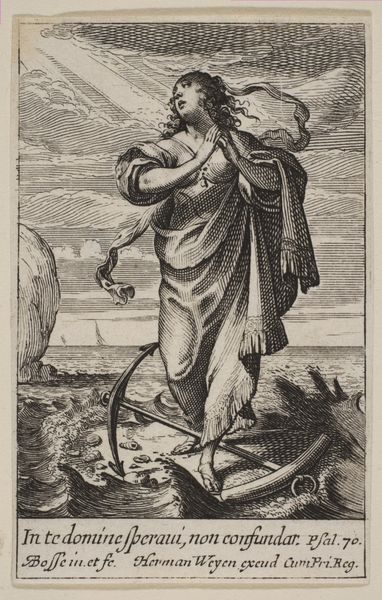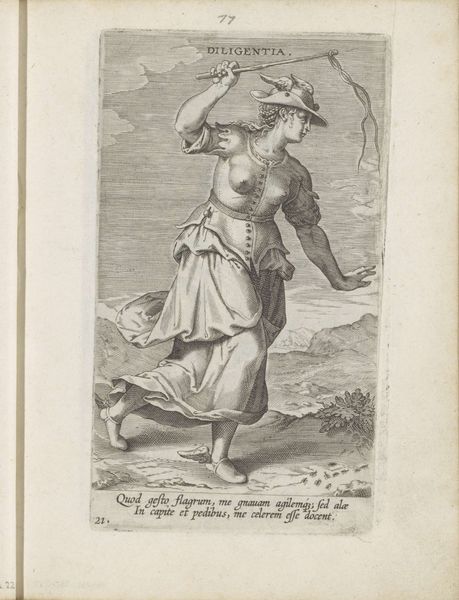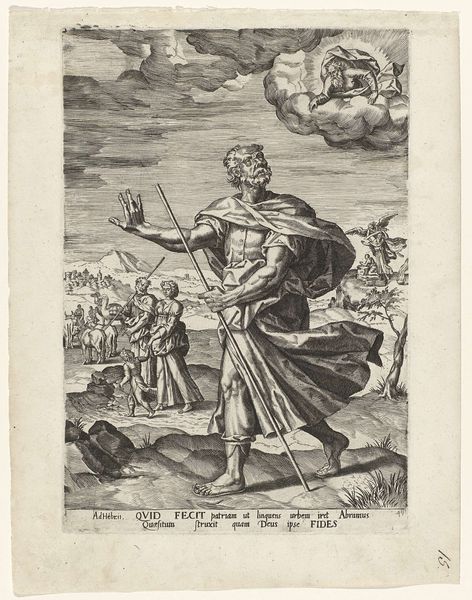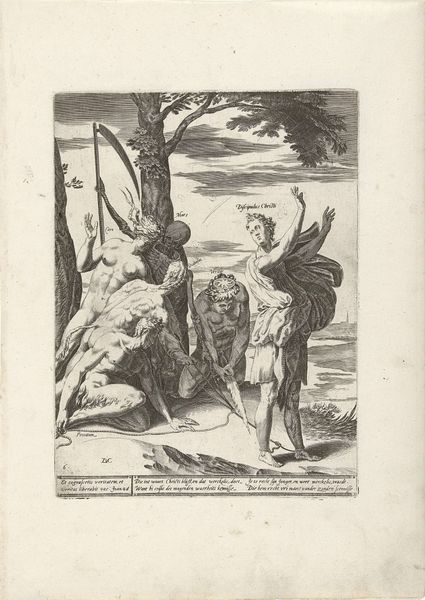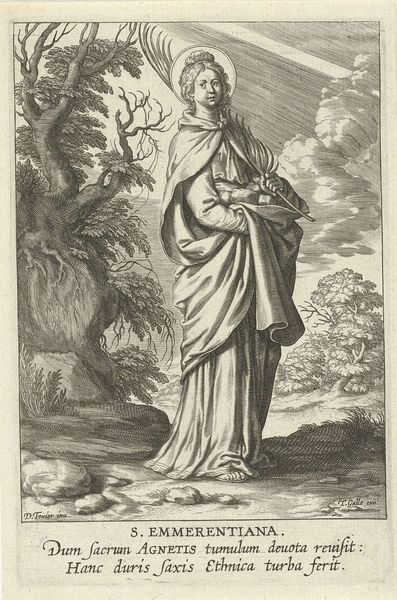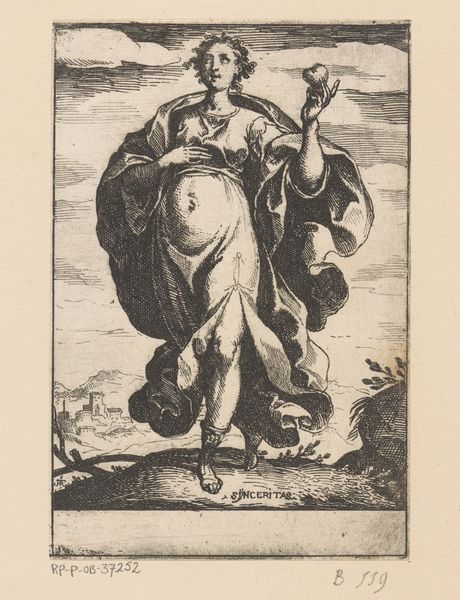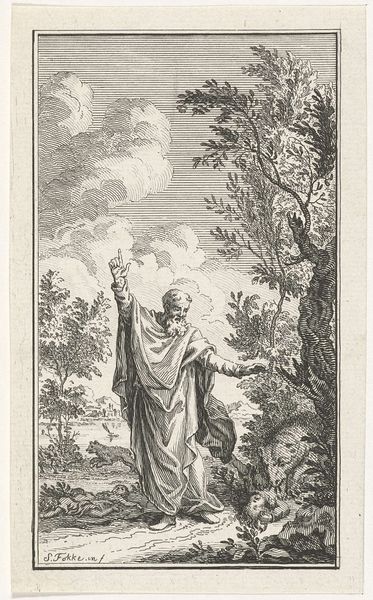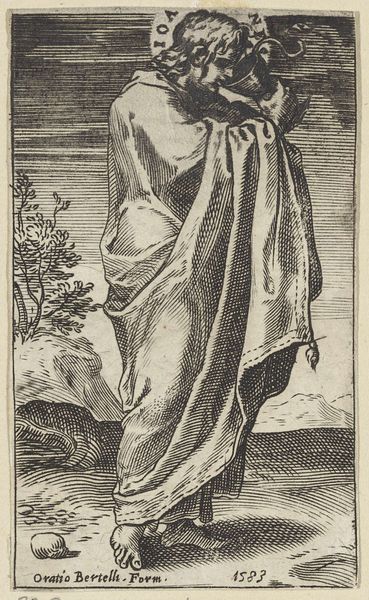
Dimensions: height 295 mm, width 197 mm
Copyright: Rijks Museum: Open Domain
Editor: This engraving, titled "The Ascension of Enoch," created sometime between 1550 and 1625 by Pieter Jalhea Furnius, is fascinating. I'm immediately struck by how the figure seems to be floating, almost weightless, even with the heavy drapery. What do you see in this piece? Curator: Well, the iconography here is incredibly rich. Enoch, unlike many figures of the Old Testament, doesn’t die. Instead, he ascends directly to heaven, signifying a profound act of divine favor. Notice how he carries the book – what symbolic weight might that have? Editor: Perhaps it's a symbol of divine knowledge, or the word of God that he embodies through his righteous life? Curator: Precisely! The book represents divine wisdom and scripture, but consider too how Furnius portrays God – seemingly caught mid-gesture, his eyes averted from us as the viewers. He looks ready to speak. How do you think the visual language—the line work and the figure's position amidst swirling clouds—affects the overall message? Editor: The clouds definitely contribute to the sense of drama and otherworldliness. It’s as if Furnius wanted to highlight the extraordinary nature of Enoch's departure. But why choose engraving? Curator: Engraving allowed for detailed and reproducible images, which meant wider dissemination of these powerful religious narratives. These prints served not just as aesthetic objects but as visual reminders of faith and morality. They carry potent cultural memories and were created with symbolic intent. Editor: That makes me appreciate the piece so much more. It’s not just an image; it’s a powerful piece of storytelling rooted in cultural memory. Curator: Absolutely, and a testament to how symbols and images can continue to resonate through time.
Comments
No comments
Be the first to comment and join the conversation on the ultimate creative platform.
